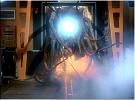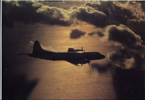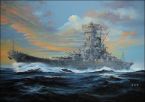ChezDaJez
Posts: 3436
Joined: 11/12/2004
From: Chehalis, WA
Status: offline

|
quote:
Cheez i read that Tinian Corp Zero Pilots dumped their radios as they were to heavy for them.... but this is rediculus
Many leaders dumped the radios because they were carp, very sensitive to vibration. The wieght savings was minimal but some pilots believed it help their maneuverability. From the pictures I've seen of the radios, they couldn't have weighed more than about 18kg.
From j-aircraft.com:
quote:
The following conclusions were reached in the report. The radio sets were well designed and at the beginning of the war, well built. As the war went on, shortages of raw materials began to affect the quality of the radio components. One of the earliest problems encountered was a lack of coordination between the manufacturers of the radios and the aircraft builders. Frequently, no provision was made for mounting points for the radios in the initial cockpit designs of aircraft. As a result they were fitted as an afterthought in whatever space was available. This led to problems of accessibility in some aircraft types. Crewmembers had difficulty adjusting frequencies, volume and other parameters of the radios. The greatest problem encountered was that of correctly installing the radios with proper wiring, shielding and grounding of the equipment. It seems that little attention was devoted to this problem until late in the war. Insufficient shielding of the ignition system of the aircraft caused interference with reception of signals to a great degree, as did static charges generated by the passage of the airframe through the atmosphere. It seems that there were very few officers at fighter group level who were familiar with radio systems or who cared to conduct effective programs to maintain them. The resulting poor performance quickly led fighter pilots to cease using the radios and resort to the old visual methods. In the case of some land-based groups, they removed all radio equipment to enhance the performance of the planes. Ship-based planes needed to retain their radios for navigation and homing purposes.
Very early in the war the lack of radios severely limited tactical control options that could be exercised by flight commanders. Sakai, Saburo wrote of the death of fellow pilot Miyazaki, Yoshio and the near ambush of Lt. Sasai, Junichi under circumstances where formations had drawn apart and he was unable to tell the straying aircraft that they were about to be bounced. These incidents occurred over New Guinea in May 1942. Later, during the air battles around Guadalcanal, Japanese fighter formations had great difficulty coordinating escort actions due to heavy cloud conditions degrading visibility at multiple altitudes. John Lundstrom cites this on page 192 of “The First Team and the Guadalcanal Campaign”.
Chez
_____________________________
Ret Navy AWCS (1972-1998)
VP-5, Jacksonville, Fl 1973-78
ASW Ops Center, Rota, Spain 1978-81
VP-40, Mt View, Ca 1981-87
Patrol Wing 10, Mt View, CA 1987-90
ASW Ops Center, Adak, Ak 1990-92
NRD Seattle 1992-96
VP-46, Whidbey Isl, Wa 1996-98
|
 Printable Version
Printable Version












 was such a good and a big forum...
was such a good and a big forum...









 New Messages
New Messages No New Messages
No New Messages Hot Topic w/ New Messages
Hot Topic w/ New Messages Hot Topic w/o New Messages
Hot Topic w/o New Messages Locked w/ New Messages
Locked w/ New Messages Locked w/o New Messages
Locked w/o New Messages Post New Thread
Post New Thread